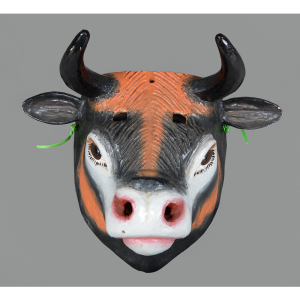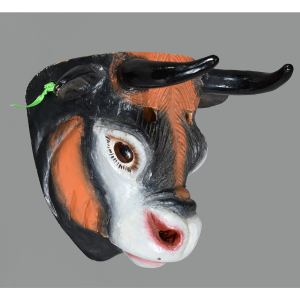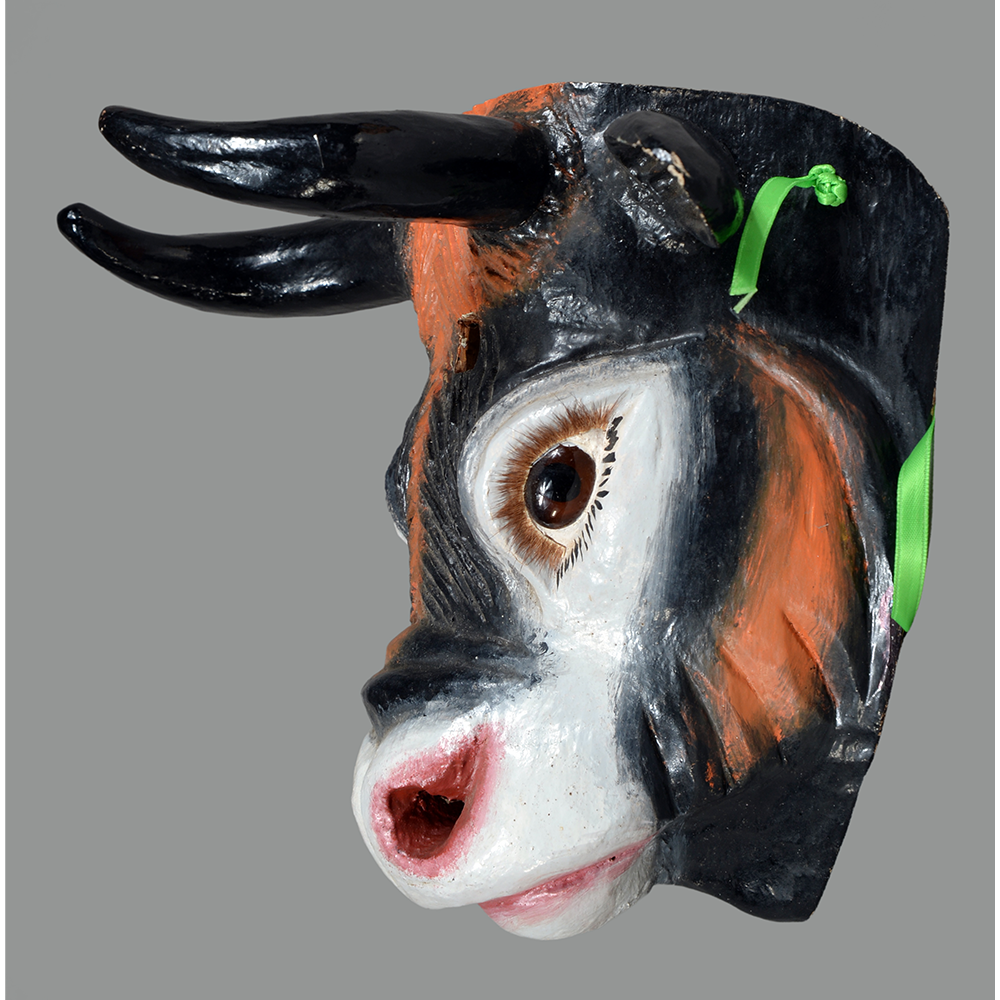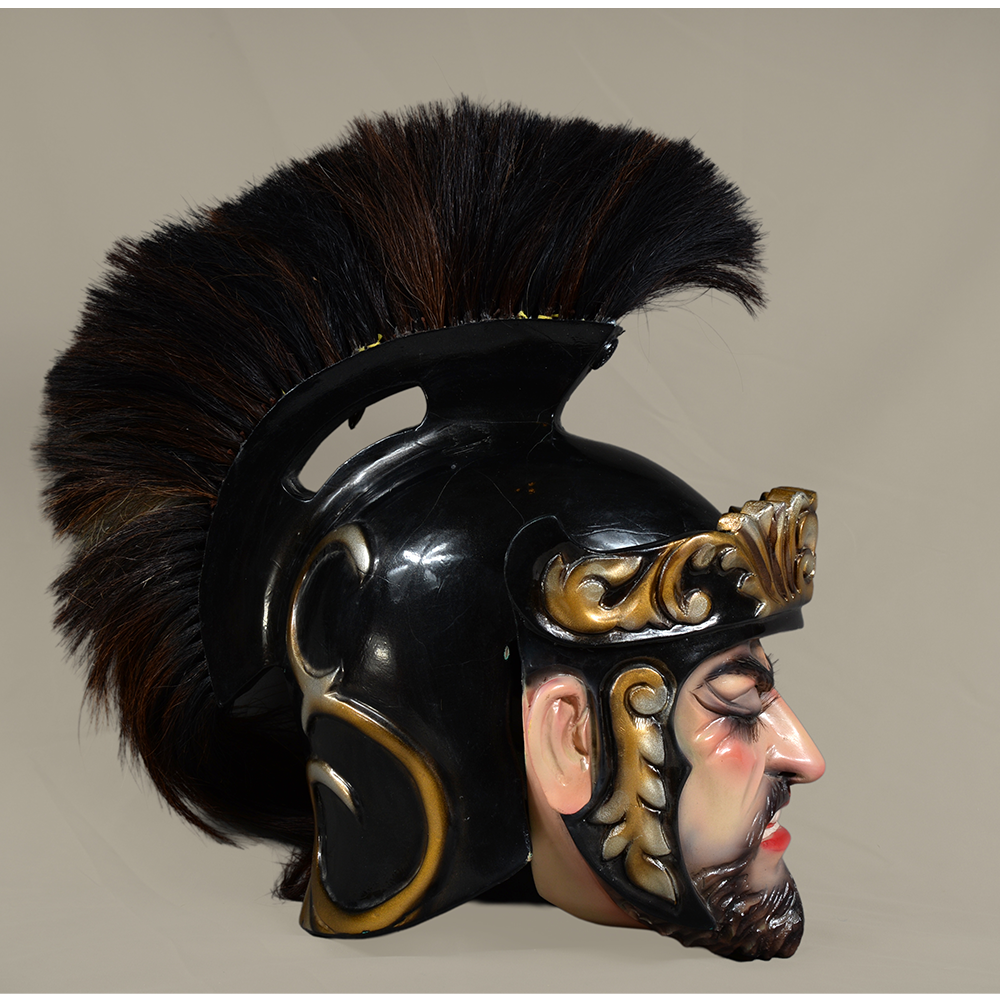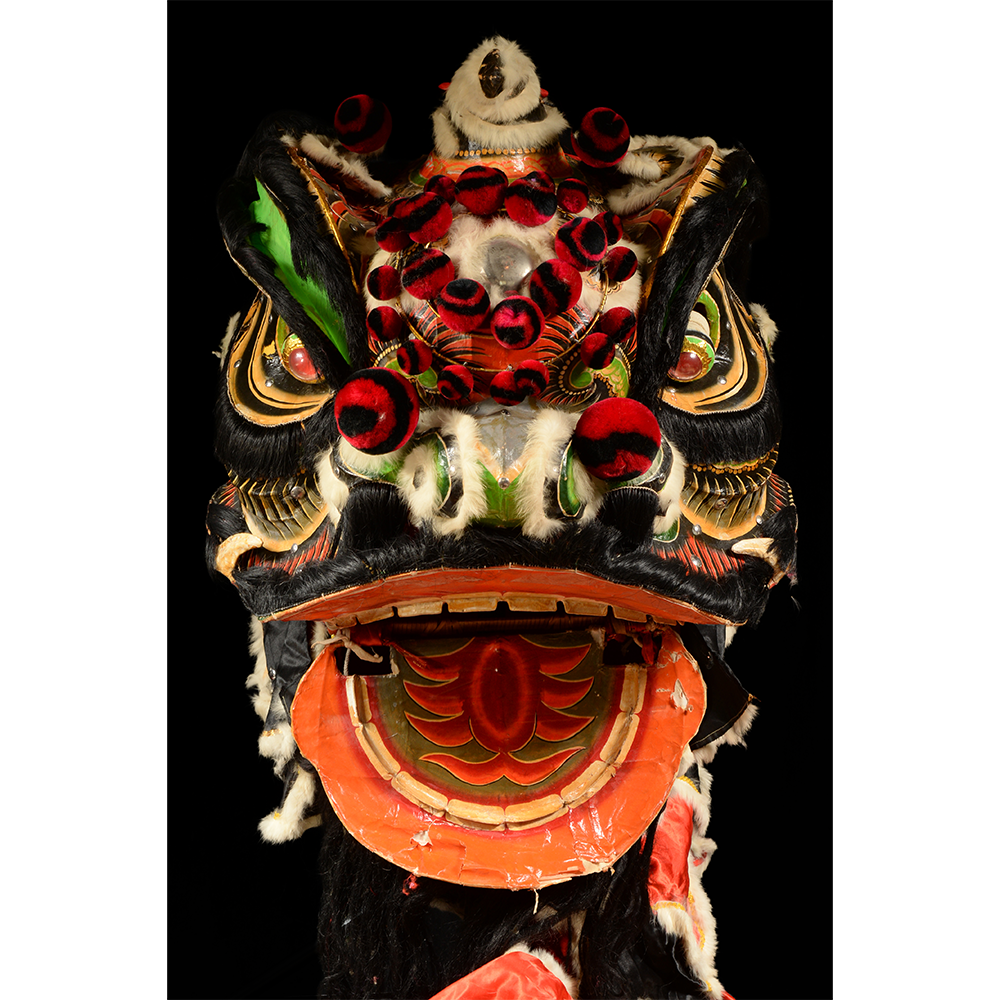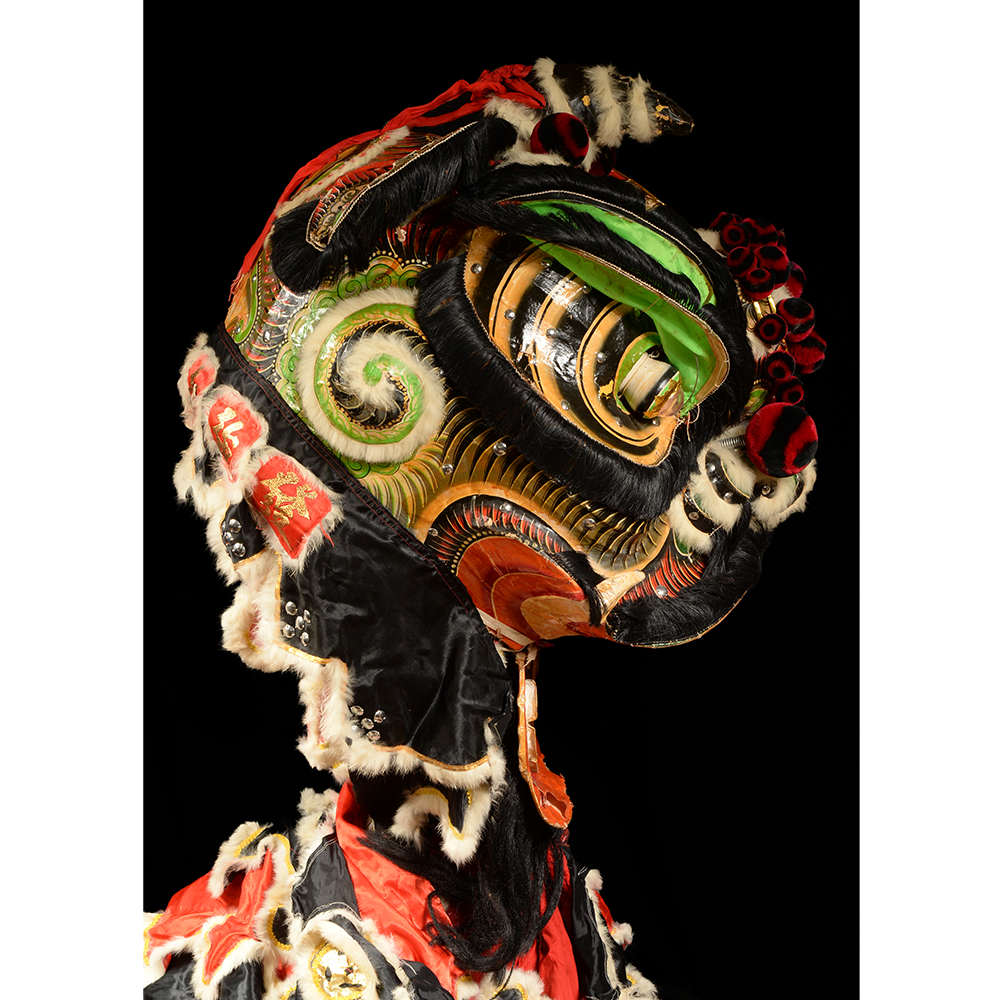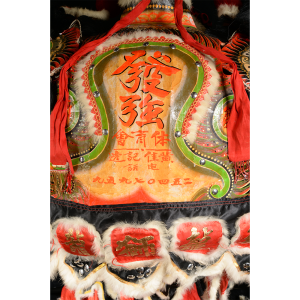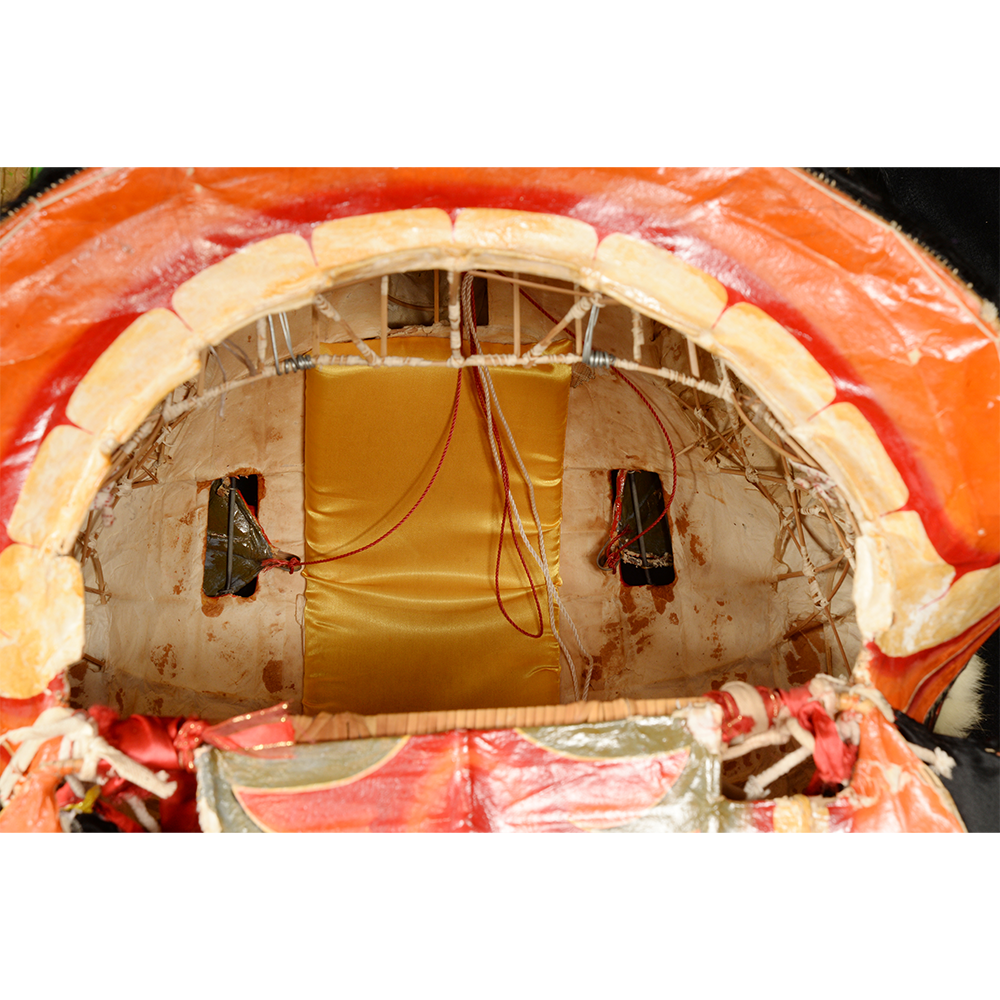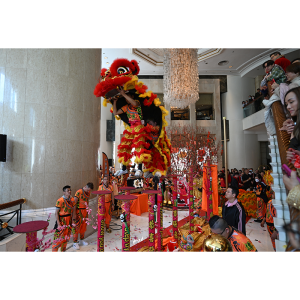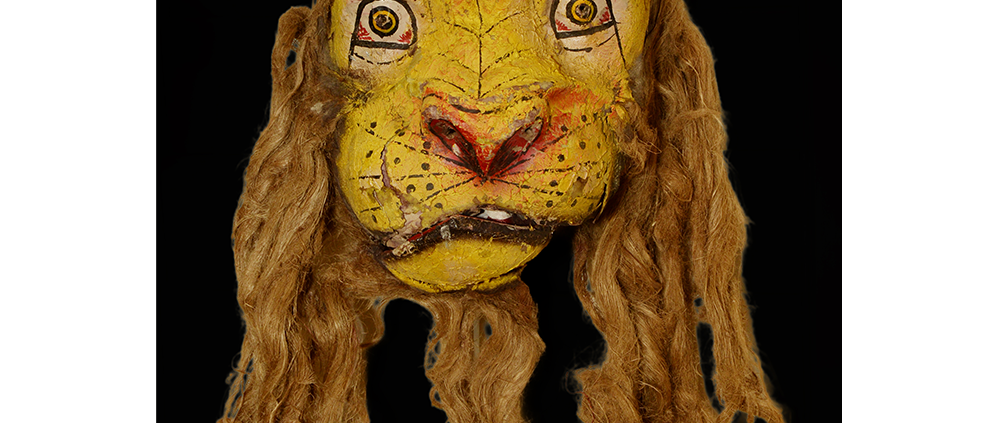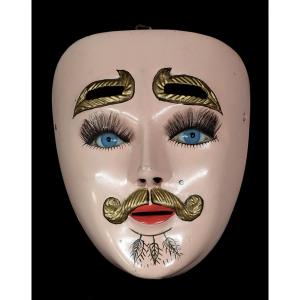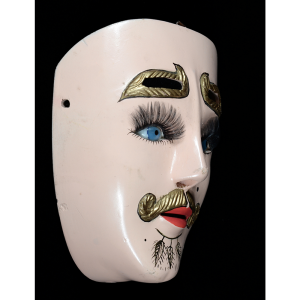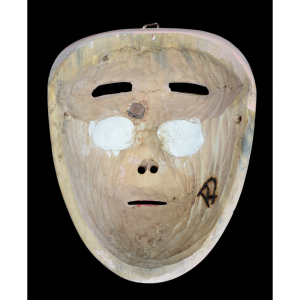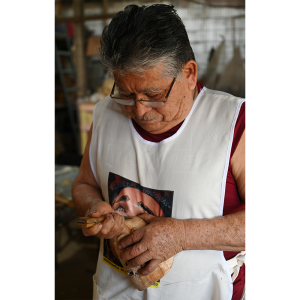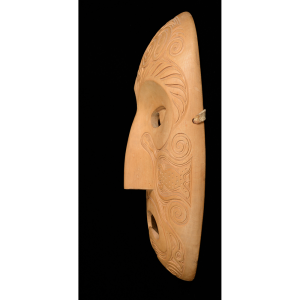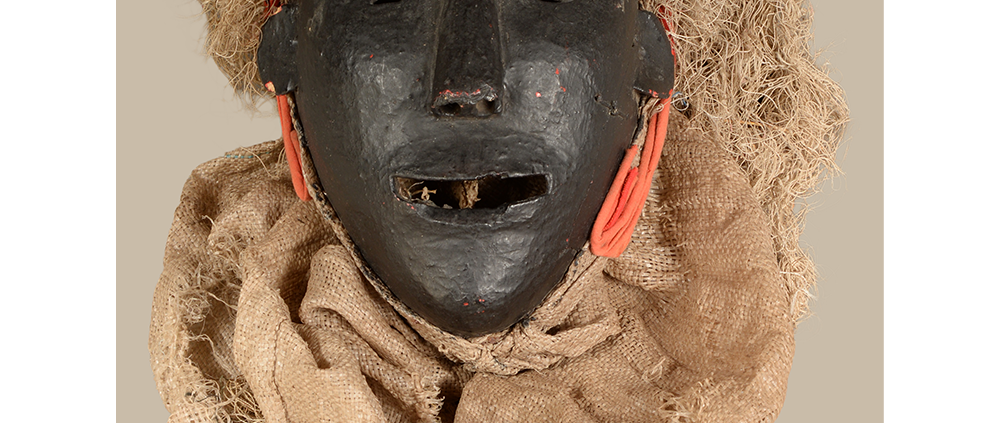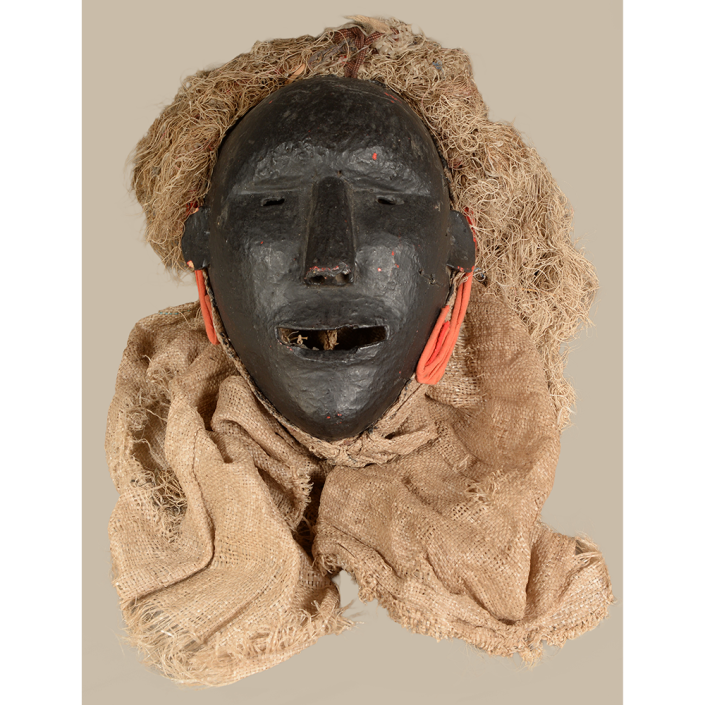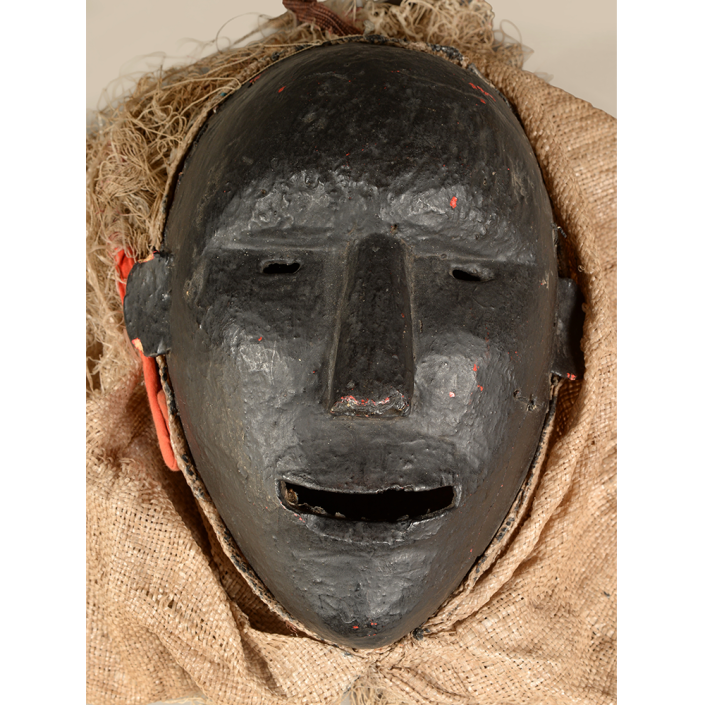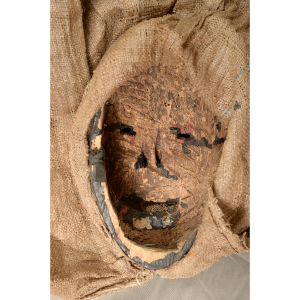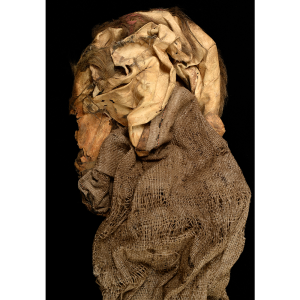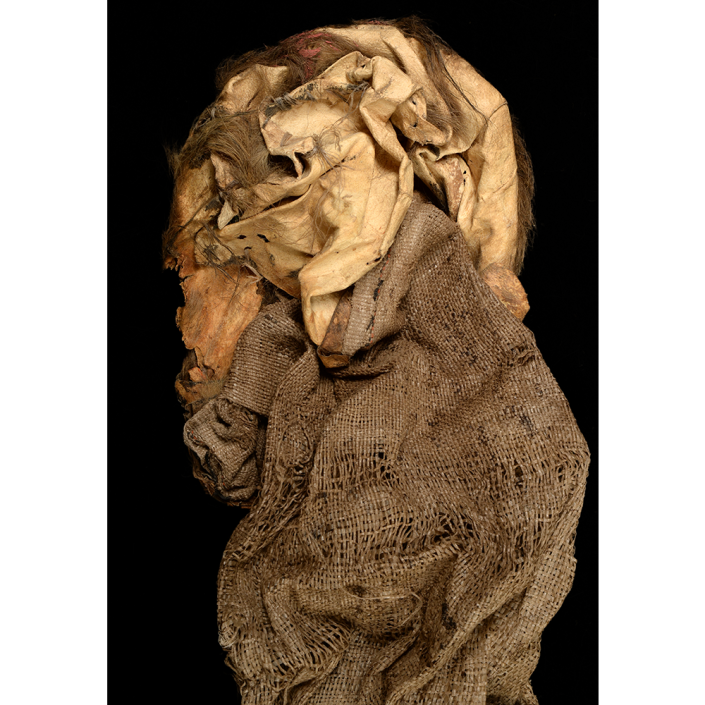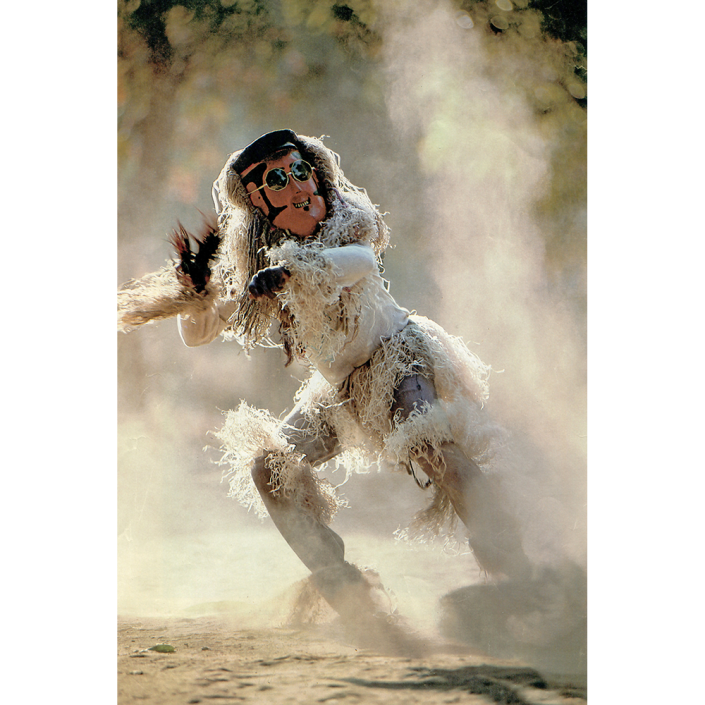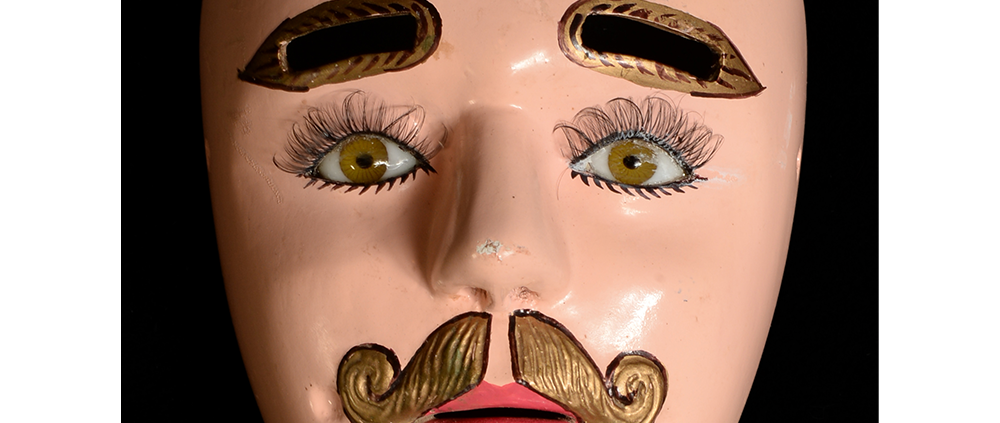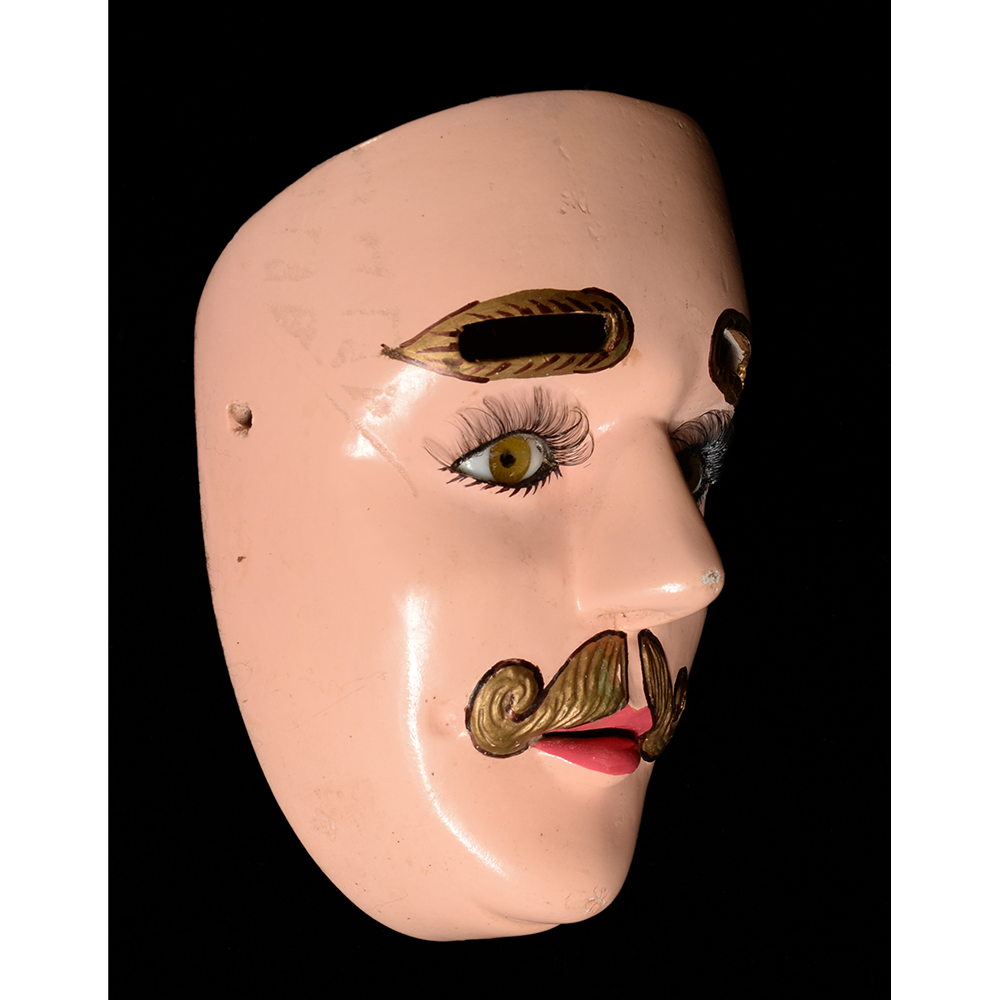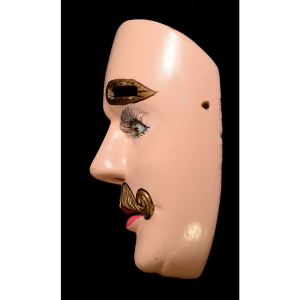TITLE: Gongsun Zan Nuo Mask
TYPE: face mask
GENERAL REGION: Asia
COUNTRY: China
SUBREGION: Guizhou
ETHNICITY: Hmong (Miao)
DESCRIPTION: Nuo mask of Gongsun Zan for the Romance of the Three Kingdoms
CATALOG ID: ASCN016
MAKER: Zhou [first name unknown] (Cha Tou Pu Village, Pingba City, Anshun, 1934-2012)
CEREMONY: Nuoxi
FUNCTION: Celebration; Entertainment; Protection/Purification
AGE: 1980
MAIN MATERIAL: wood
OTHER MATERIALS: paint; string; human hair; mirror; adhesive; rubber bands; decorations of dyed cotton; bamboo; artificial pheasant feathers
The Nuoxi of China may be traced back to the Ming Dynasty (1368-1644 CE), possibly much earlier (some believe the Shang and Zhou Dynasties) and was popular in large parts of the empire, but especially along the southern borders, where it was a form of entertainment for the imperial troops. It evolved from a sacrificial rite performed by shamans into a more dramatic form, with both Buddhist and Taoist overtones. Nuo opera is based on historical stories and stories based on the Taoist religion and all roles (including female roles) are performed by men. It evolved into a popular form of entertainment and was eventually accompanied by an orchestra of Chinese instruments. The Nuo opera never quite lost its shamanic connection, however, and also was used to exorcise evil spirits at the home of sick persons. The sacred connection is evident from a religious ceremony that always precedes the opening of a Nuo opera. In addition, a wooden statue representing the originator of the opera is present at every performance, and nobody except the opera troupe may touch props used in the performance. Although the Chinese Communist Party attempted to suppress Nuo performances and eliminated it from most of the country, the opera continues to be performed in three southern provinces of China today (Guangxi, Guizhou, and Jiangxi).
The Miao people are part of the Hmong ethnic group living in southern China. The hair on Miao nuo masks must be cut from the corpse of a man who had several children and who lived an exemplary life, neither feuding with neighbors nor hoarding wealth. This character, Gongsun Zan, was a real Chinese general and warlord who lived during the period of Han Emperor Xian (181-234 CE). The character mask is used in a dance-drama from the Romance of the Three Kingdoms, a 14th-century novel of historical fiction. In the Romance, Gongsun Zan leads a cavalry unit of white horses that defends the northern and eastern frontiers of the Chinese Empire from non-Han invaders. When another warlord (Dong Zhuo) seizes Emperor Xian and holds him hostage, Gongsun Zan joins a coalition to free the emperor. Later, he battles with a third warlord, Yuan Shao, over the territories of northern China, but is defeated and killed at the Battle of Yijing.

















